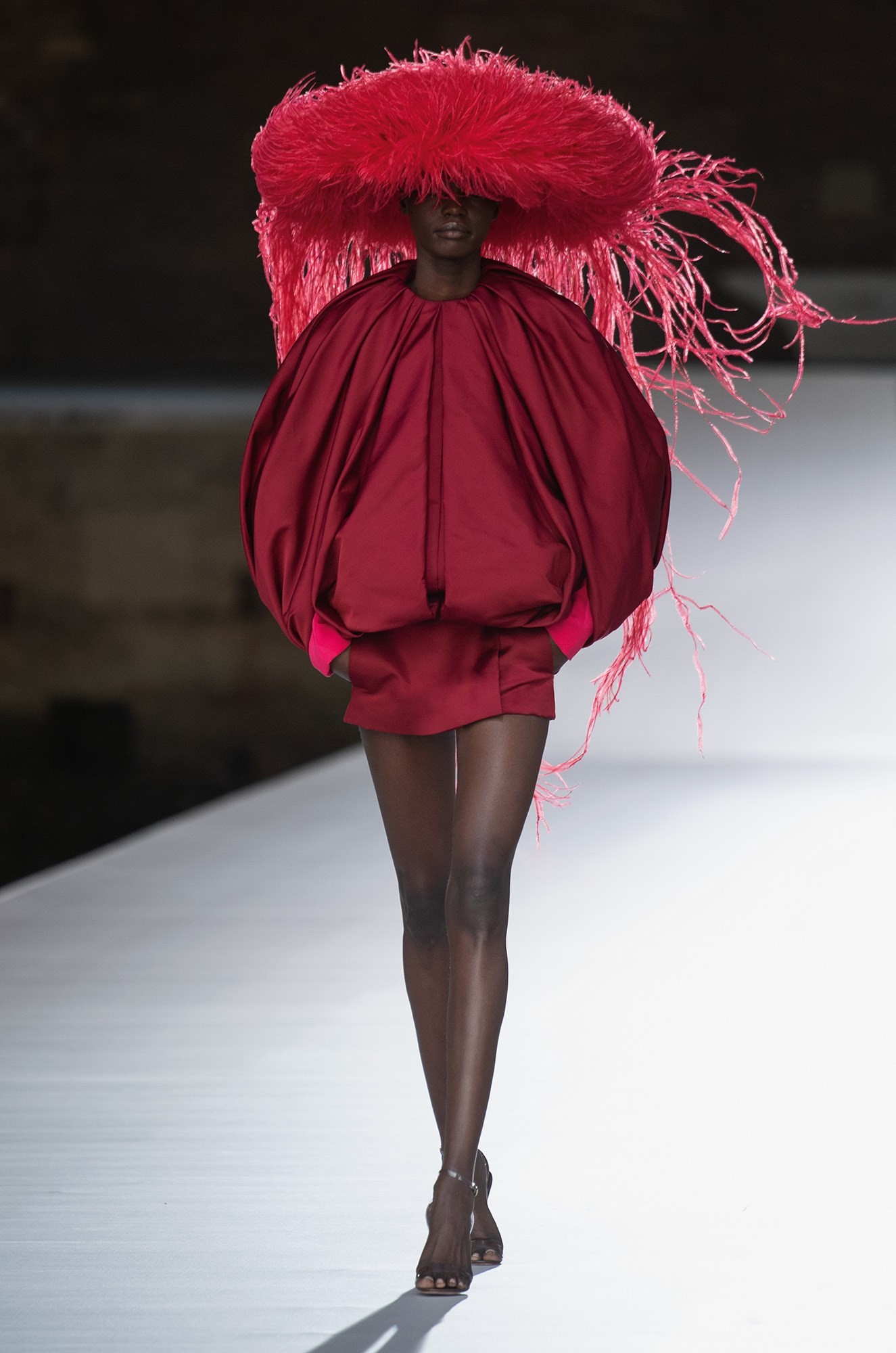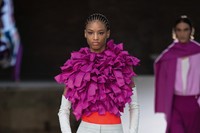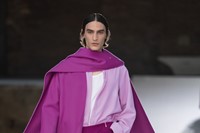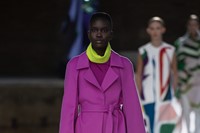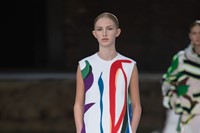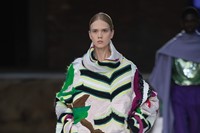A Valentino haute couture show is a joy to behold on multiple levels – this latest was even more multi-layered, many-faceted and deliriously intense than normal. Because, of course, times still aren’t normal – you don’t usually need to have nasal swabs to attend a fashion show (or, indeed, a dinner), and audiences aren’t sparsely spread, few in number, with many willing guests unable, for various reasons, to travel. But such is a fashion show staged in a slowing (but still present) global pandemic, a fact inescapable and evident from the masked faces to the sharp aldehyde scent of hand-sanitiser and the tentative waves safely replacing warm embraces. Except … except that you kind of forgot about it as Pierpaolo Piccioli’s Valentino clothes began to emerge, on a catwalk erected over a Venetian lagoon in the shadow of the city’s Arsenale, where boats used to be made to ferry the riches of the world to this hub of Renaissance creativity. This time, the riches came on a plane, from Rome. I’m sure a few Visconti doges were turning in their graves over that.
Piccioli’s Valentino haute couture collections aren’t really about themes or inspirations: he doesn’t ‘do’ shows inspired by, say, 19th-century painting, or the 40s, or travels to exotic climes and cultures. References to all those were there, of course – Piccioli created crinolines fit for Empress Eugenie in a Winterhalter portrait, a swaggering red coat in the middle of this show, square-cut, gave me shades of mid-century Dior, and we travelled through places and times from slinky New York Studio 54 evening dresses to bold kimono cuts and Asian patterns – but they were just snippets, glances, absorbed into a greater whole.
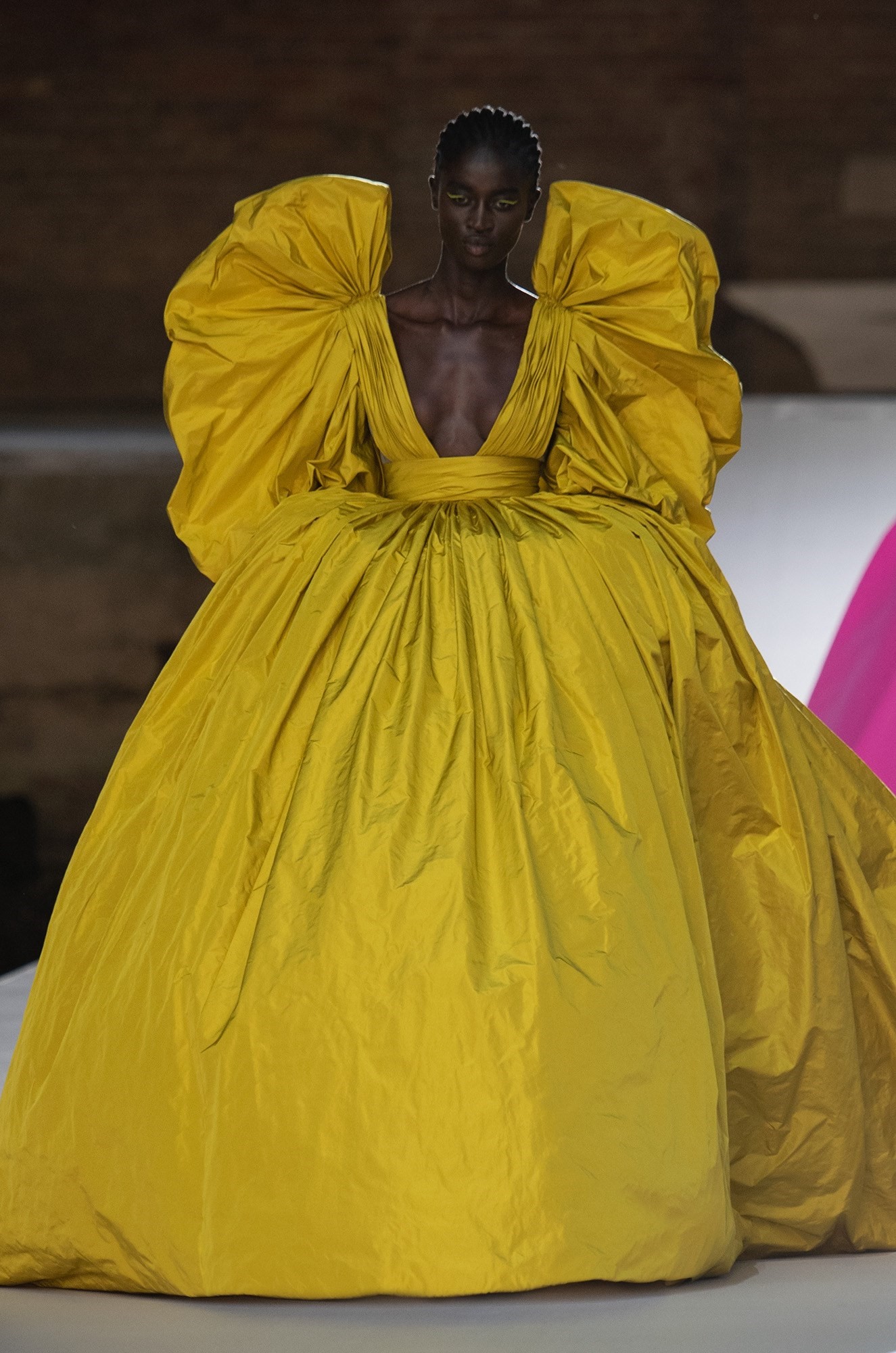
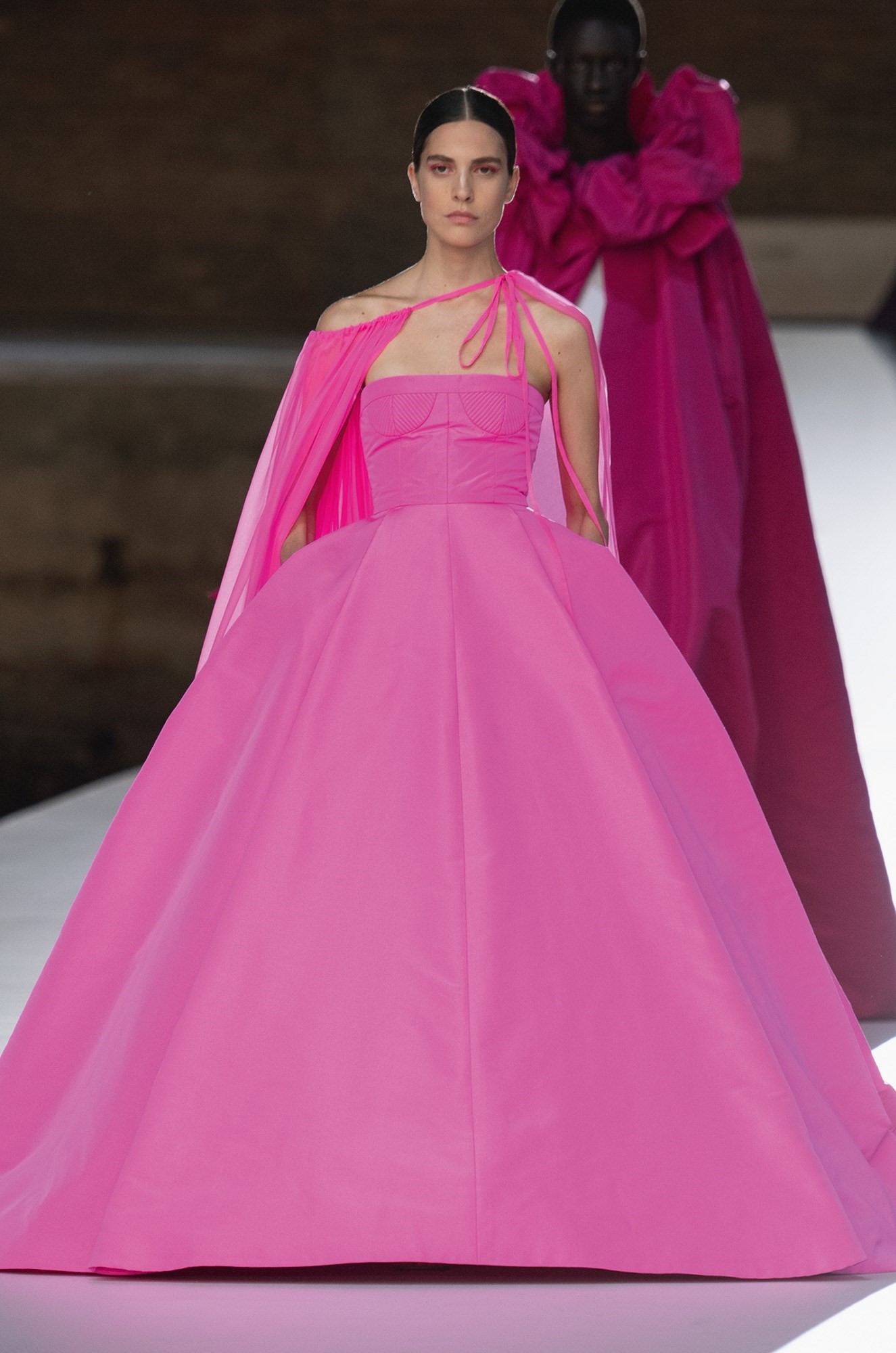
Having said that, there was some structure to this show: a collaboration with a selection of living artists of all ages and backgrounds, curated by Gianluigi Ricuperati, resulting in around 20 fashion pieces in total. Fitting, for Venice, a city at the very crux of the renaissance art explosion and whose modern cultural identity is tied to its world-renowned art biennale. The pieces reinterpreted the artists’ work through what Piccioli called “the language of couture” – meaning painstaking embroideries, patchwork and intarsia-work particularly. Instead of print – this is couture, after all – the works were transformed into fabric, the sense of the pieces themselves translated to cloth. That resulted in, say, the nude figures of a work by the Brussels-based figurative painter Anastasia Bay becoming semi-sheer, allowing glimpses of the body inside the dress, seeming to animate her forms from within, or the immediacy and aggression of the scrawled figures of Amsterdam artist Benni Bosetto being recreated as labour-intensive embroideries, paradoxically requiring even more work to seem unfinished or spontaneous. The collection was titled Des Ateliers – “the place of making, of thinking with the hands.” Ateliers are also spaces both art and fashion have in common – and these pieces weren’t the result of appropriation, but extensive conversations between the artists and their ateliers and Piccioli, then in turn between him and his ateliers. He’s perhaps the world’s most glamorous and talented middleman.
Those arty looks did not the show make: they comprised roughly a quarter. But they did, perhaps, suggest a different structure, a new approach. Thinking of art makes you think of colour – which Piccioli adores, is a modern master at using, and here indulged to delirium. Like a painter squeezing pigment fresh from the tube, dresses emerged in rich purple, a vibrating yellow, a hulking lump of chartreuse, one after the other. A redux of Philip Treacy’s ostrich-fronded ‘jellyfish’ hats from the Valentino Spring/Summer 2018 couture show suddenly seemed like paint splodges Jackson Pollock-ing in the breeze, and the short dresses worn underneath, moulded around the body, had a distinct sculptural quality. If art is purely for art’s sake, some of this fashion seemed for fashion’s sake. In the most glorious, unapologetic and achingly beautiful manner. Free is a great word to use about Pierpaolo Piccioli’s Valentino. I hope it’s one he would appreciate. He’s free creatively, free ideologically – his couture is all-embracing, reflecting ideas of championing inclusivity and diversity, but more fundamentally these clothes seem hell-bent on, simply, making people happy. Whether you’re wearing them, or watching them.
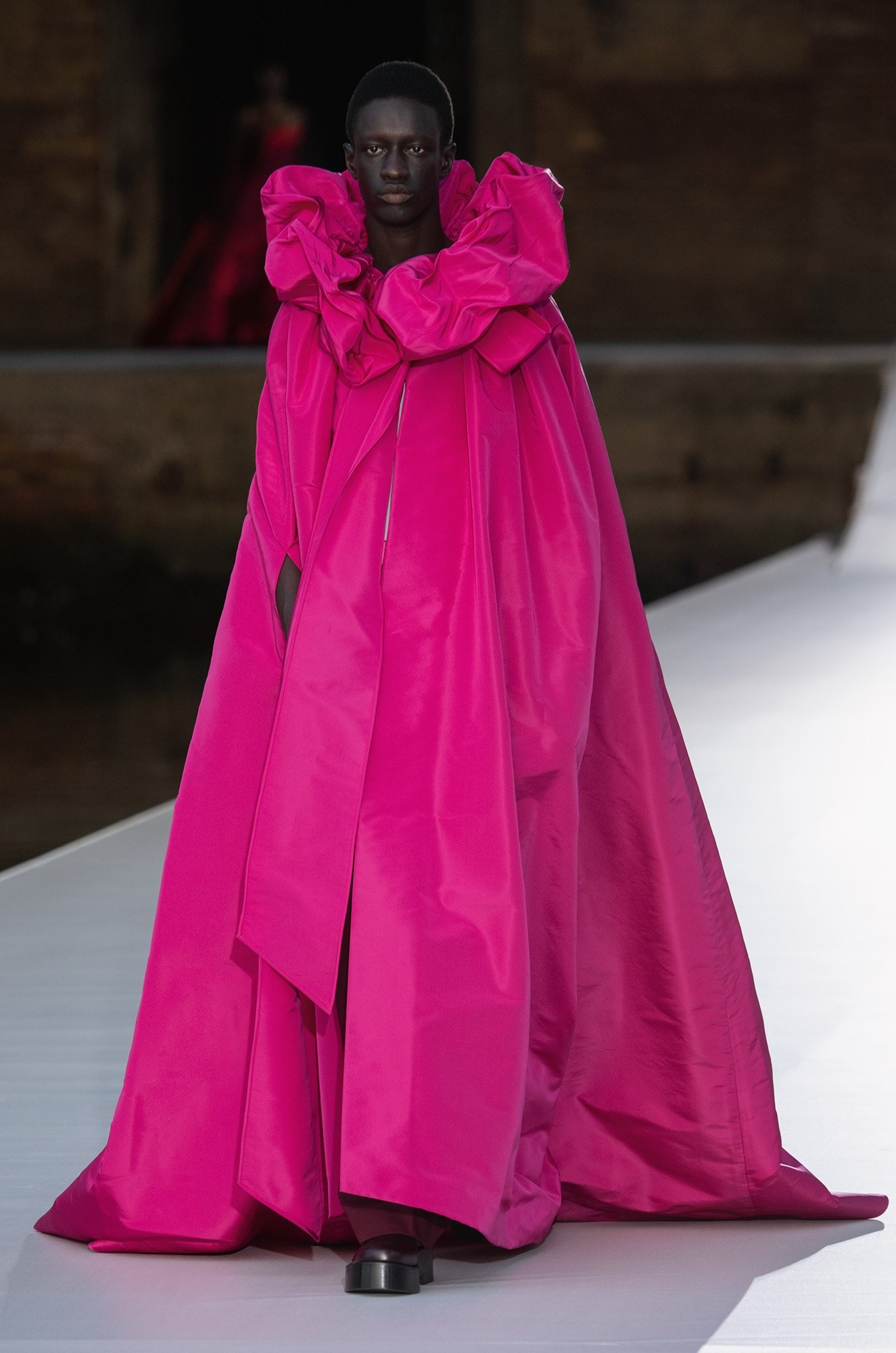
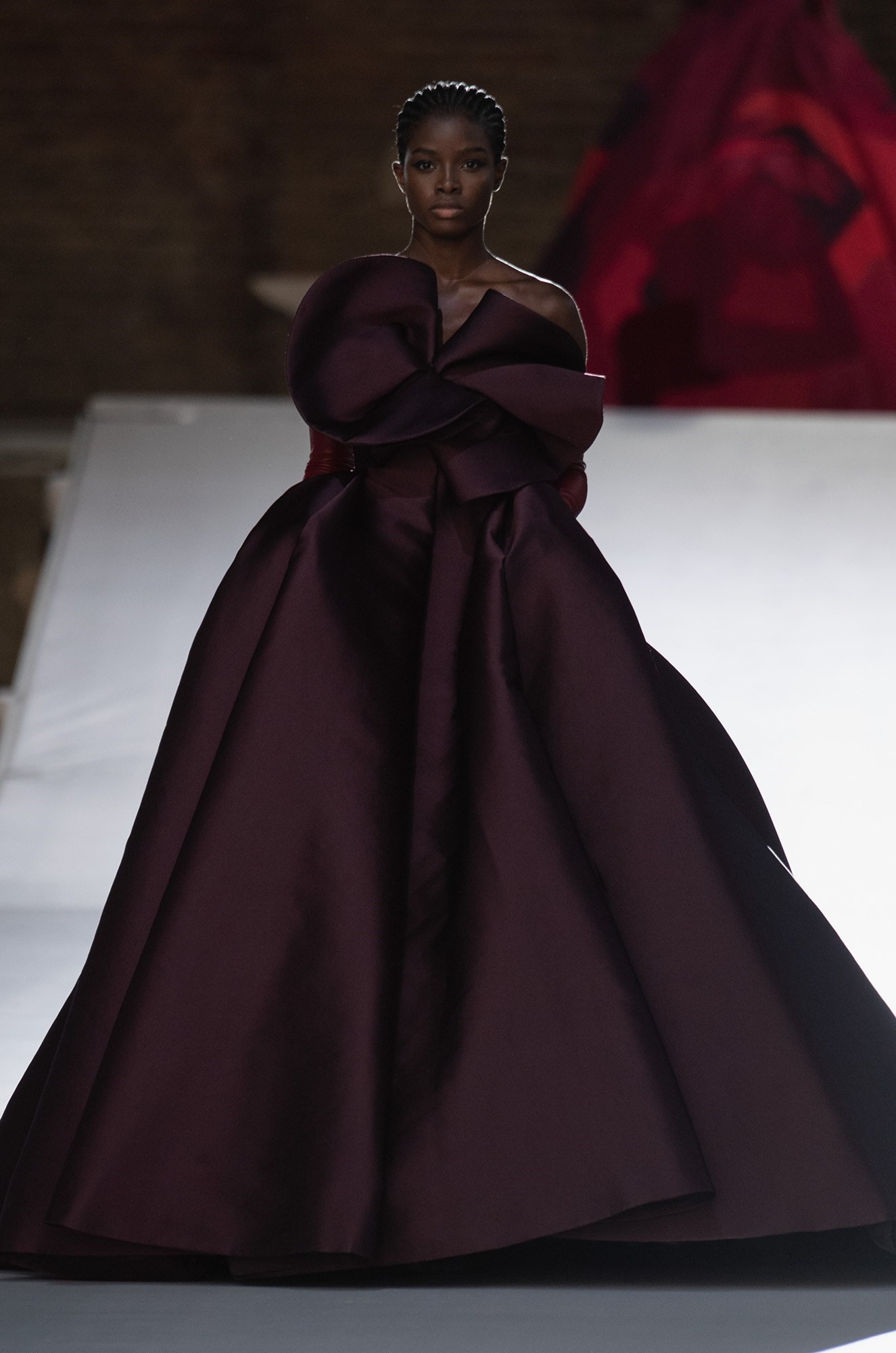
This was a stellar show in every respect: staged over calm Venetian waters, with a live piano accompaniment by the British musician Cosima and an audience theatrically dressed in all-white (at the Maison’s request) for the occasion. The clothes were gorgeous. But framed by the hardships, restrictions, sadness and loss of the past year – with particular reference to Italy, hit early and hard by the Covid-19 pandemic – this fashion show had an extra punch and power beyond the simple act of parading gorgeous clothes before a few hundred eyes. Piccioli exalted unity and community, couture and art, and the coming-together of the people creating them, now creating together. And there was a happiness in the coming-together of the audience, too, to witness the ritual of haute couture which is, at its very heart, about a proposal of beauty through cloth. It doesn’t have to be obtainable to have validity – you don’t have to be able to buy something for it to make you dream.
I spent a lot of time in Venice wandering around palazzos, staring at magnificent frescoed ceilings, marvelling at the commitment of past ages to crafting wonder. Then, I went to a Valentino show, and realised it’s still alive and kicking. As is haute couture, as a whole.
